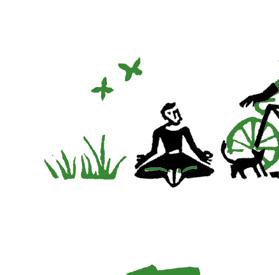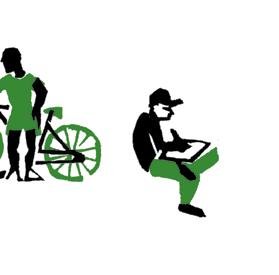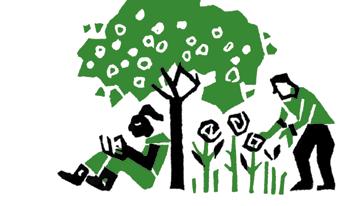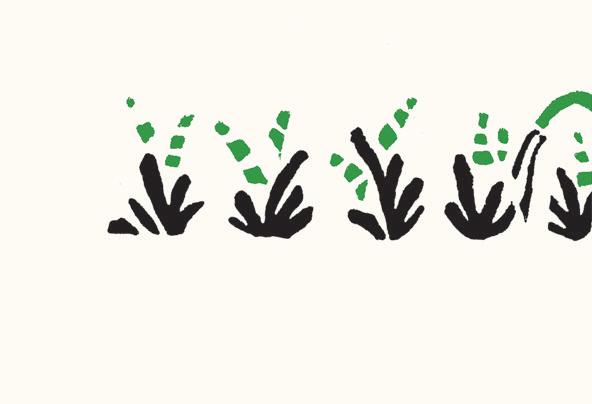





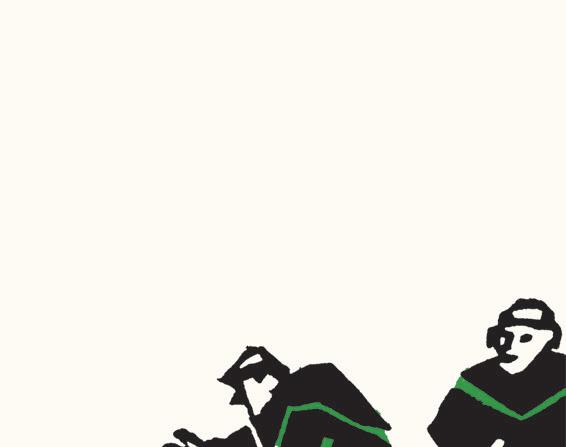

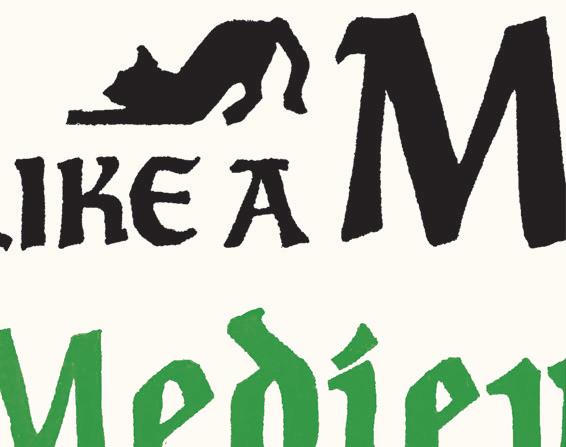
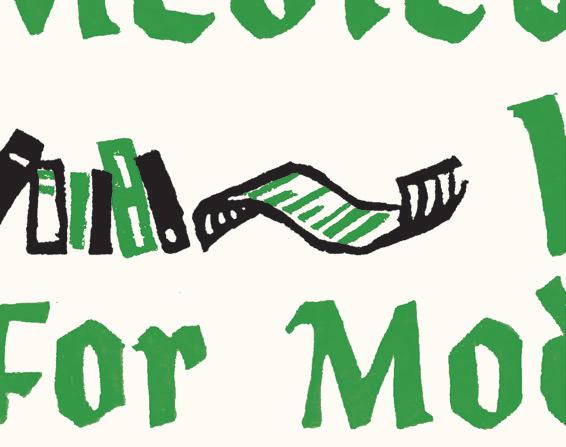
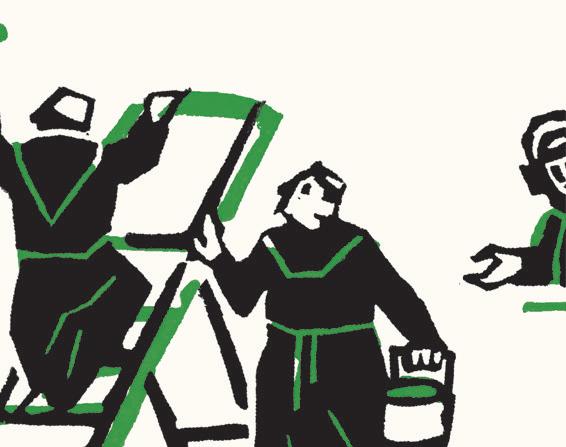


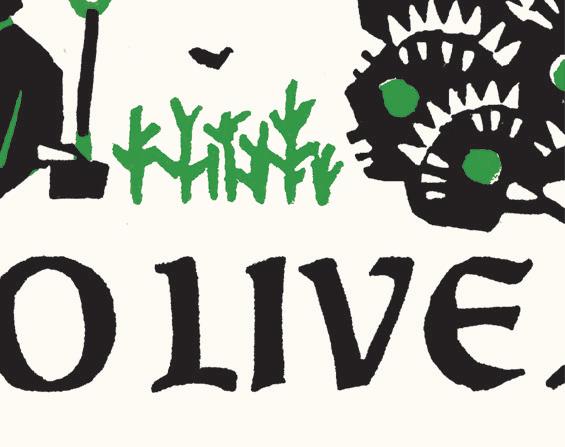

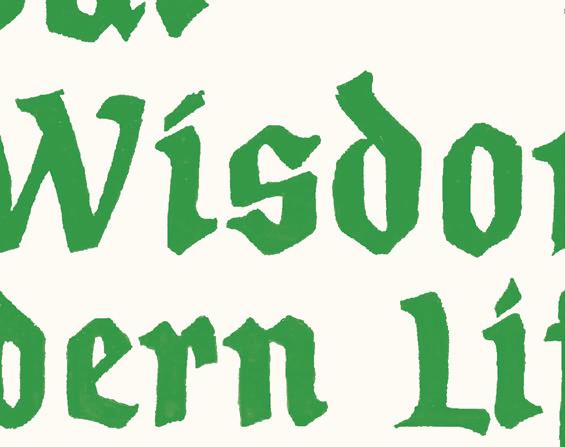
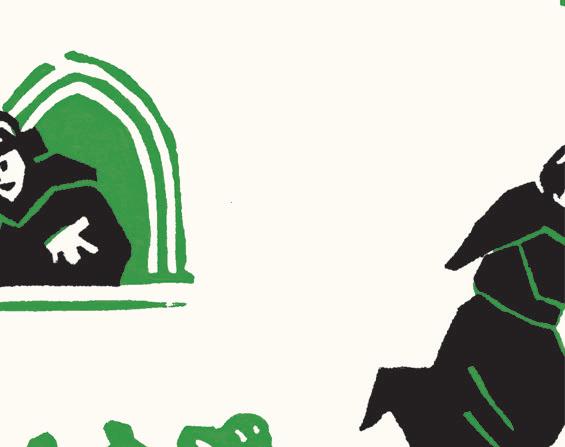


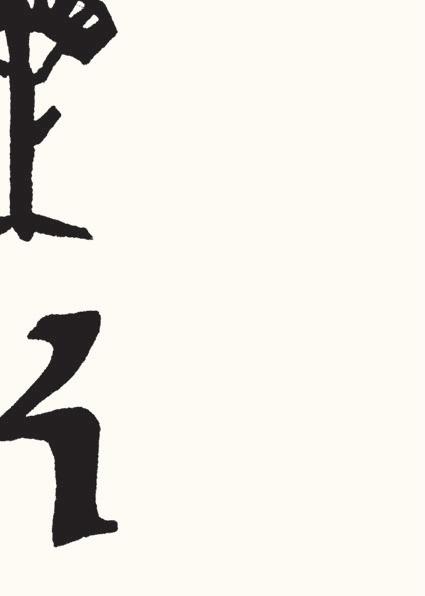
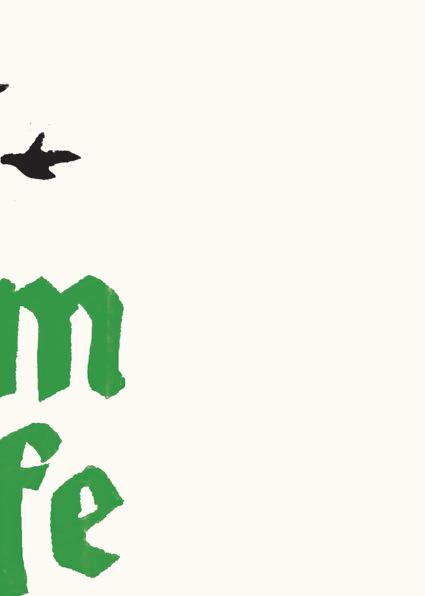


This book is dedicated to the memory of my great-grandmother, Freda Horton, a woman who was equal parts pithy wisdom, fashion savvy, courage, and love.
—Danièle Cybulskie

Project Editor: Lauren Bucca
Copy Editor: Amy K. Hughes
Design: Misha Beletsky
Production Manager: Louise Kurtz
Copyright © 2021 Abbeville Press. All rights reserved under international copyright conventions. No part of this book may be reproduced or utilized in any form or by any means, electronic or mechanical, including photocopying, recording, or by any information retrieval system, without permission in writing from the publisher. Inquiries should be addressed to Abbeville Press, 655 Third Avenue, New York, NY 10017. The text of this book was set in Study. Printed in China.
First edition 10 9 8 7 6 5 4 3 2 1
Library of Congress Cataloging-in-Publication Data
Names: Cybulskie, Danièle, author. Title: How to live like a monk : medieval wisdom for modern life / Danièle Cybulskie. Description: First edition. | New York : Abbeville Press Publishers, [2021] | Includes bibliographical references and index. | Summary: “A book on how medieval monastic practices can inspire us to live fuller lives”—Provided by publisher.
Identifiers: LCCN 2021023864 | ISBN 9780789214133
Subjects: LCSH: Monastic and religious life. Classification: LCC BX2435 .C93 2021 | DDC 248.8/9432—dc23 LC record available at https://lccn.loc.gov/2021023864
For bulk and premium sales and for text adoption procedures, write to Customer Service Manager, Abbeville Press, 655 Third Avenue, New York, NY 10017, or call 1-800-A RTBOOK .
Visit Abbeville Press online at www.abbeville.com.
The Five-Minute Medievalist logo by Eric Overton


playful when they should be serious, and require a lot of attention and care that the monks could be spending on their pious works. People were also uneasy about having children devoted to a monastic life before they were old enough to choose for themselves, so eventually it was made official that oblates could leave the monastery if they wished, instead of taking vows in their late teens. Some children ended up in monasteries (either temporarily or permanently) under different circumstances. For example, people without the resources or ability to care for children might abandon them anonymously at the monastery gates to be cared for by the community. There were also some exceptions made, such as in the case of Edward I of England’s daughter Mary, who was sent to a convent at the age of six to be a companion to her grandmother, Eleanor of Provence.2
Monasteries’ close links with literacy and education were a good reason for adults to take vows too. Many an educated lady who had been widowed, as Eleanor of Provence was, chose to retire to a monastery or convent in order to spend her days with like-minded women, reading and studying. The same went for men who wanted to spend their twilight years in a retirement that was relatively comfortable and gave them the opportunity to set themselves right with God before their deaths. Some people took vows to atone for a grievous sin they’d committed, and others were unintentionally made members of a monastic community, having fled to an abbey for sanctuary to avoid punishment for a crime. Sanctuary seekers could not set foot outside the sacred ground of the abbey without a pardon or a promise to head directly into exile, and conviction for a crime such as theft, rape, or murder could easily result in capital punishment. Members of urban monasteries such as London’s Westminster Abbey, then, could often have the unexpected pleasure of
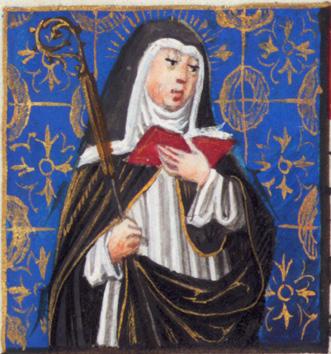

Prayer
fol. 26v,
the company of criminals, who had no choice but to become members (either lay or full) of the community, or face death or exile.3
There were, of course, those who took monastic vows out of sincere devotion, too, and this accounts for the majority of people within monastic communities across Europe, as Caesarius suggests, even if this makes for less salacious reading. Medieval theology dictated that becoming a monk or nun was one of the best ways to serve God: to devote your life to his service, giving up all fleshly pleasures and worldly ambitions. Living according to strict rules was definitely not easy, which is exactly what made it an extraordinary and praiseworthy act of love and devotion.
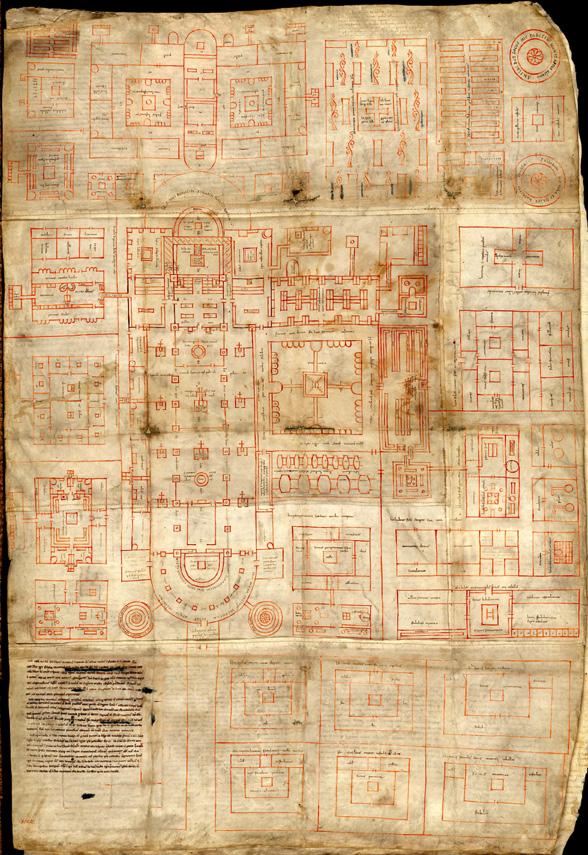
Although never built, the Plan of Saint Gall represents the ideal monastic layout, with the church and cloister in the center and buildings for guests, schooling, and storage surrounding them. The plan also includes a cemetery, a mill, and several brewhouses and bakehouses to support the community.
Codex Sangallensis, 1092r, c. 9th century
Abbey Library of Saint Gall, Saint Gallen, Switzerland
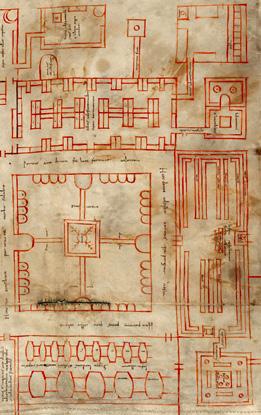
The cloister of Saint Gall was meant to contain a two-story building featuring a warming room below and dormitory above (the long rectangle at the top, which has beds drawn in).
A communal privy (top right) and bathroom are attached. The refectory (right) is attached to the monks’ kitchen (bottom right) and cellar (bottom left). These buildings enclose a central garth with walking paths for the brothers laid out in the shape of a cross.
Codex Sangallensis, 1092r, c. 9th century (detail)
Abbey Library of Saint Gall, Saint Gallen, Switzerland
envisioned that all the brothers would sleep in the same long room; however, as the Middle Ages went on, monks increasingly had their own cells. Brothers were instructed to keep their doors unlocked, though, to prevent any hidden sinning.6
Many modern people imagine that medieval hygiene habits left a lot to be desired, but this is definitely not true, and in any case, even holy people need to relieve themselves. For this reason, monasteries frequently had privies attached to the dormitory, and some of them had running water to flush waste. Like pretty much everything else in monastic life, using the privy was anything but private; rather than individual stalls, the brothers employed rows of holes to perform their bodily functions. Because the body was considered sinful and tempting, however, monks were meant to keep their bodies as concealed as possible, to the point of covering their heads with their hoods while using the facilities.
Beyond those particular basics of hygiene, monasteries also had bathhouses. The Rule of Saint Benedict begrudges
placed here for our purposes and the natural processes that make both gardens and people flourish and grow.
Find Yourself a Soul Patch
Nothing refreshes the sight so much as fine short grass. —Albertus Magnus
Modern doctors have toyed with the idea of giving prescriptions for physical activity and time outdoors, but this is not a new idea. For medieval monks, whose prayers kept them within the church for a large part of the day, having time outside was considered essential. Although monks didn’t wallow in the dark—they had windows and candles and lamps, of course—there is no replacement for the outdoors. And it couldn’t be just a cobblestone courtyard either; it had to be green. According to Hugh of Fouilloy, “The green turf which is in the middle of the material cloister refreshes encloistered eyes and their desire to study returns. It is truly the nature of the colour green that it nourishes the eyes and preserves their vision.” Another medieval writer, William of Auvergne, declared this was because green is “half way between black which dilates the eye and white which contracts it.”1
Cloisters were arranged in squares around a central courtyard or garth—a place in which plants were grown and fountains were kept. Framing the garth were roofed, colonnaded-stone corridors for monks to walk along, under which they could take refuge from sun and rain. But in order to both accommodate foot traffic and provide the healing green the brothers needed, the garth itself was often a grass lawn. Albertus Magnus, a thirteenthcentury Dominican bishop, provides a surprisingly detailed look at the effort required to create a green space of such serenity:
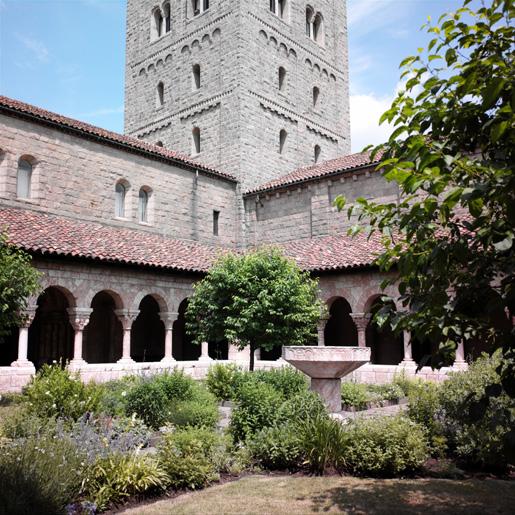
Garths provided green space in the center of the cloister to allow monks to refresh themselves in nature and to walk with other brethren.
Column base, c. 1130–40
The Met Cloisters, New York
One must clear the space destined for a pleasure garden of all roots, and this can hardly be achieved unless the roots are dug out, the surface levelled as much as possible, and boiling water is poured over the surface, so that the remaining roots and seeds which lie in the ground are destroyed and cannot germinate. . . . The ground must then be covered with turves cut from good [meadow] grass, and beaten down with wooden mallets, and stamped down well with the feet until they are hardly to be seen. Then little by little the grass pushes through like fine hair and covers the surface like a fine cloth.2
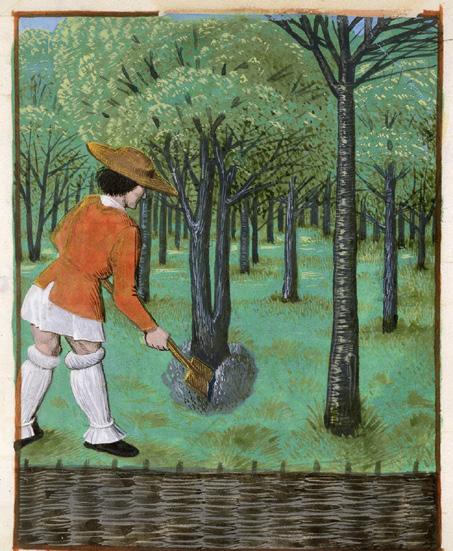
Orchards not only provided food for the monastic community but were also a peaceful place to lay the dead to rest.
Ruralia commoda, fol. 28r, c. 1478–80 (detail)
British Library, London; Royal 14 E VI
Despite the impressive general knowledge of the medicinal uses of herbs that we scratched the surface of a moment ago, death was always closer in the medieval world because of poorer nutrition and a lack of antibiotics, which made every small accident that much more dangerous. Cemeteries, then, were not a rare sight, nor were they such taboo places as they are today. Often, they were places for people to gather for secular activities like games or even clandestine romantic rendezvous. In fact, in what was partially an effort to conserve space behind walls, monks were sometimes buried in the abbey orchard. Though it may make modern people squeamish,
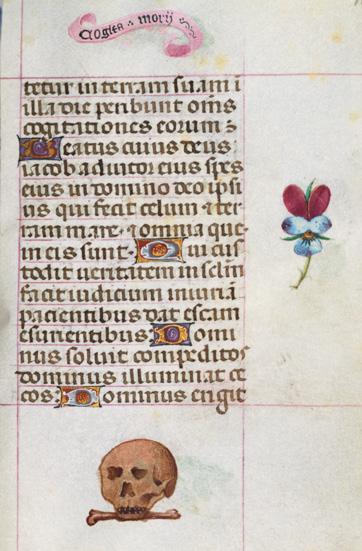
Memento mori often appear alongside images of beauty and life, as in this book of hours. The scroll at the top says Cogita morii, “think about death.”
Book of hours, fol. 165r, c. 1500 (detail)
Walters Art Museum, Baltimore; W.427
this meant, of course, that the monk became a nourishing part of the monastic life cycle, even in death.
For a medieval monk, the idea of returning to earth was primarily meant to inspire feelings of humility, as no one who was eventually going to be food for worms in the end could be that important. As Saint Peter Damian, a Benedictine monk and cardinal of the eleventh century, put it so colorfully,
Come, now, brother, what is this body which you clothe which such diligent care and nourish gently as if it were royal offspring? Is it not a mass of putrefac-

When monks took vows, their communities shrunk down to a handful of people who held the same values, performed the same duties, and shared the same trials.
Book of hours, fol. 166v, c. 1430–35 (detail)
Walters Art Museum, Baltimore; W.168
mon purpose was essential to making the monastery run smoothly. Novices had a yearlong probationary period for the sole purpose of ensuring the right fit for both themselves and for the community. As the author of Barnwell Priory’s Observances remarked, “Brethren should be careful not to choose those of whose election they may
afterwards repent.”13 As we’ve seen, the whole point of establishing monasteries in the first place was to have the faithful work together to help each other avoid sin and achieve salvation, so it was essential that the relationships within the monastic community were solid. The interference of people who did not share the same outlook or goals was an unwelcome disruption.
The major difference between relationships in the modern world and those in the monastic world is that geography is no longer a factor. Once a monk had entered monastic life, his old life fell away. For modern people, when we graduate from school, move towns, or change jobs, that need not be the end of our relationships; in fact, people are now expected and even pressured to keep in touch. For a monk, this clinging to the past would be unnecessary in many ways and irrelevant to the life he was now living.
A popular maxim is that we are the average of our five closest relationships; we fall in the middle of these people in terms of happiness, education, and even weight. Whether or not this is true in literal terms, science has shown that we are incredibly influenced by the actions of our peers, such that when a member of our peer group becomes more physically active or gets divorced, we are more likely to as well. This also holds true for success: if the people we surround ourselves with are successful, we will be too.14
If this is the case (and it is), it’s worth looking into our relationships and seeing whether the people we’re spending the most time with are enriching our lives or detracting from them. The advantage of the vast network of our relationships, through social media especially, is that it gives us opportunities to build our communities thoughtfully, allowing us to join like-minded groups and build or solidify relationships with people who can support and mentor us and who we can support in return. The synergy
also the theological heavyweights upon whose work much of the medieval church’s ideas were built.
Other holy texts included hagiographies, or saints’ lives, exciting stories that detailed the harrowing trials and martyrdoms of the saints as well as their supernatural powers. Hagiographies could be nearly as salacious as modern adventure books and television shows, as female

Saints’ lives, or hagiographies, provided moral lessons as well as being juicy tales that involved miracles, violence, and even nudity, as in the story of Saint Catherine (pictured).
The Limbourg Brothers (active 1399–1416), The Belles Heures of Jean, duc de Berry, fol. 17v, 1405–1408/9 (detail)
The Met Cloisters, New York
saints, like Saint Catherine, tended to be stripped naked by their pagan enemies before being tortured and killed, achieving miracles along the way. In addition to the racy text, hagiographies sometimes contained pictures of the saints, which may have prompted not just spiritual inspiration but the sort of lusty thoughts for which a brother would later have to confess.
Although the early modern period is often associated with the Renaissance or “rebirth” of classical learning, medieval monks before this time were familiar with the works of ancient thinkers like Plato and Aristotle, whose ideas they integrated into Christianity in complex ways. Aristotle’s ideas on natural philosophy were particularly admired, even if they seemed to contradict biblical teachings, as they shone a light on the workings of the physical world whose truths could not be ignored.
In addition to the works of the ancient philosophers, monastic libraries were stocked with books by ancient and contemporary physicians. Cassiodorus, a sixth-century abbot, makes explicit that the monks of his abbey were to read ancient medical sources:
First of all the Herb Book of Dioscorides, who has treated and portrayed the herbs of the fields with remarkable accuracy. After this read Latin translations of Hippocrates and Galen. . . . Finally, read Caelius Aurelianus’s On Medicine, and Hippocrates’s On Herbs and Cures, and various other works written on the art of medicine; with God’s help, I have left you these books, stored away in the recesses of our library.6
Cassiodorus’s declaration that he has built this collection for the monks with God’s help shows that the wisdom of the ancient world, though pagan, was to be treasured, not despised.
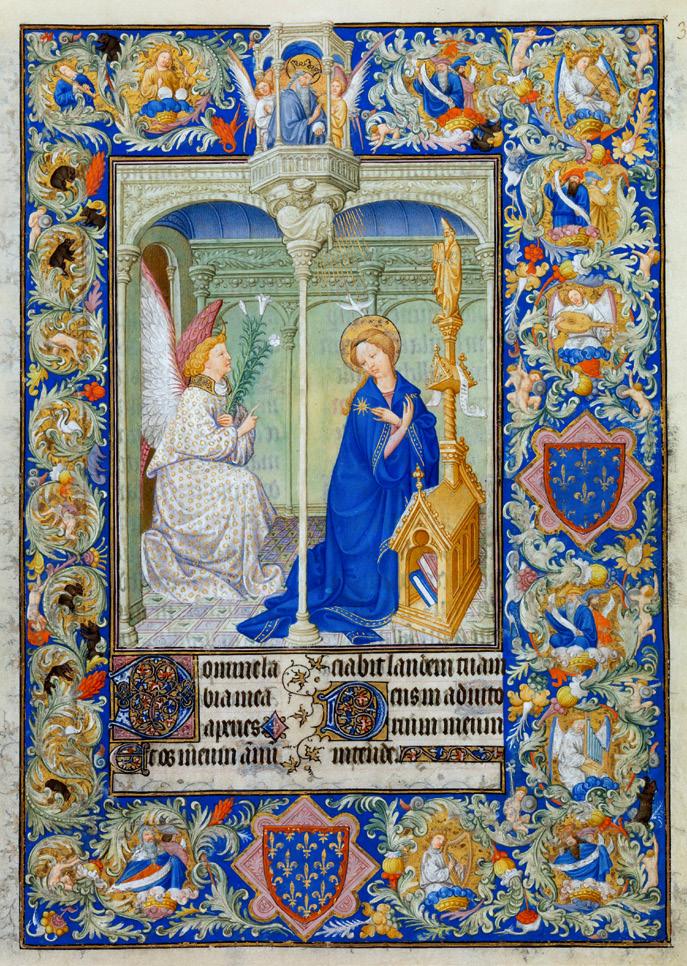
The vibrant art in this stunning book of hours is meant to showcase both the devotion and the wealth of its aristocratic patron.
The Limbourg Brothers (active 1399–1416), The Belles Heures of Jean, duc de Berry, fol. 30r, 1405–8/9
The Met Cloisters, New York
tremely well. Ink was likewise painstakingly made from everything from charcoal to oak galls, mixed with other plant materials and minerals to make pigment. Paint involved a similar combination of colorful minerals or plants, thickened with egg whites to go on more smoothly and cover larger areas. Finally, many medieval manuscripts were embellished with gold leaf, pasted on with gesso and polished to a high shine. Like the Gothic churches mentioned earlier, these were works of art, the effort put in devoted to God.12
Monks copied all sorts of manuscripts, borrowed from and traded with sister houses, a variety of which we’ve already discussed. These copies were sometimes created for the monks themselves, to supplement an abbey’s library or to supply a loaner textbook to a brother sent to study at university, for example. In other cases, the books were commissioned by wealthy nobles or royalty, or they were gifts made by the monks for individual citizens or for churches.
In addition to brilliantly illuminated copies of biblical texts like the world-famous Book of Kells and the Lindisfarne Gospels, some of the most beautiful manuscripts were commissioned books of hours, which contained the prayers that were meant to be said at the canonical hours each day. These books could be simply written in brown or black ink, or lavishly illustrated with bright colors, illustrative miniatures, and illuminated initials. They could be large copies, meant to signify both wealth and ostentatious devotion, or they could be small enough to hang from a lady’s belt in a leather pouch for frequent access throughout the day.
In addition to prayers, monks frequently copied out calendars, which would allow the reader to keep track of important saints’ days and feasts. The most important dates were usually written in red, which gives us both
